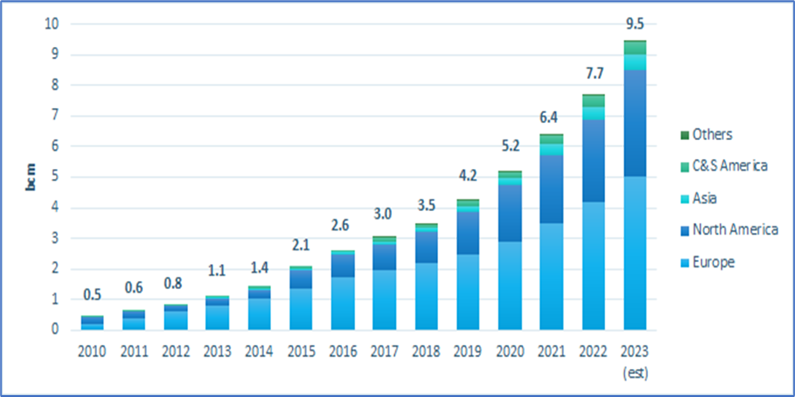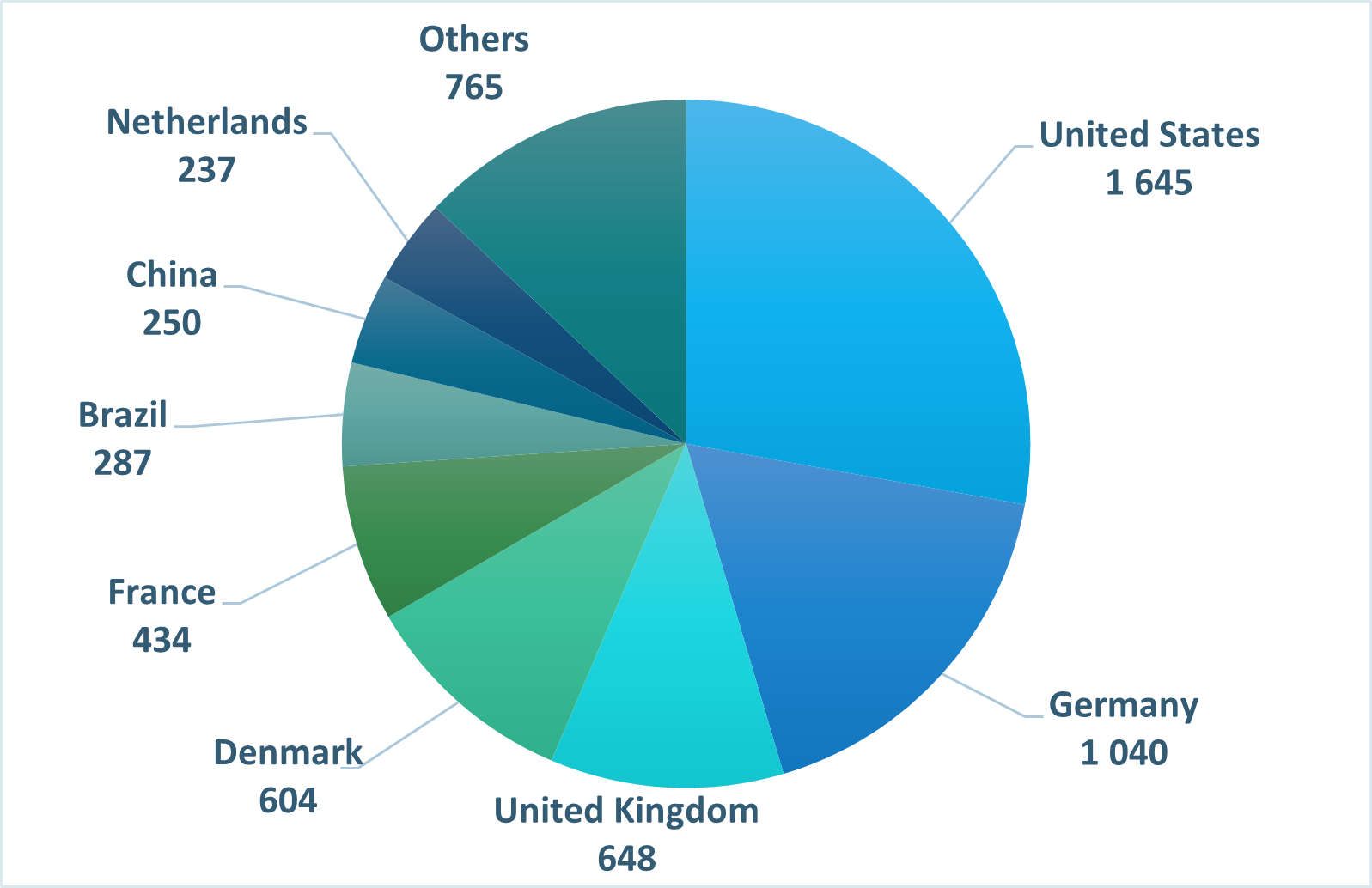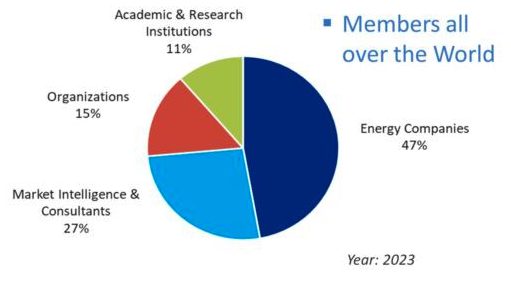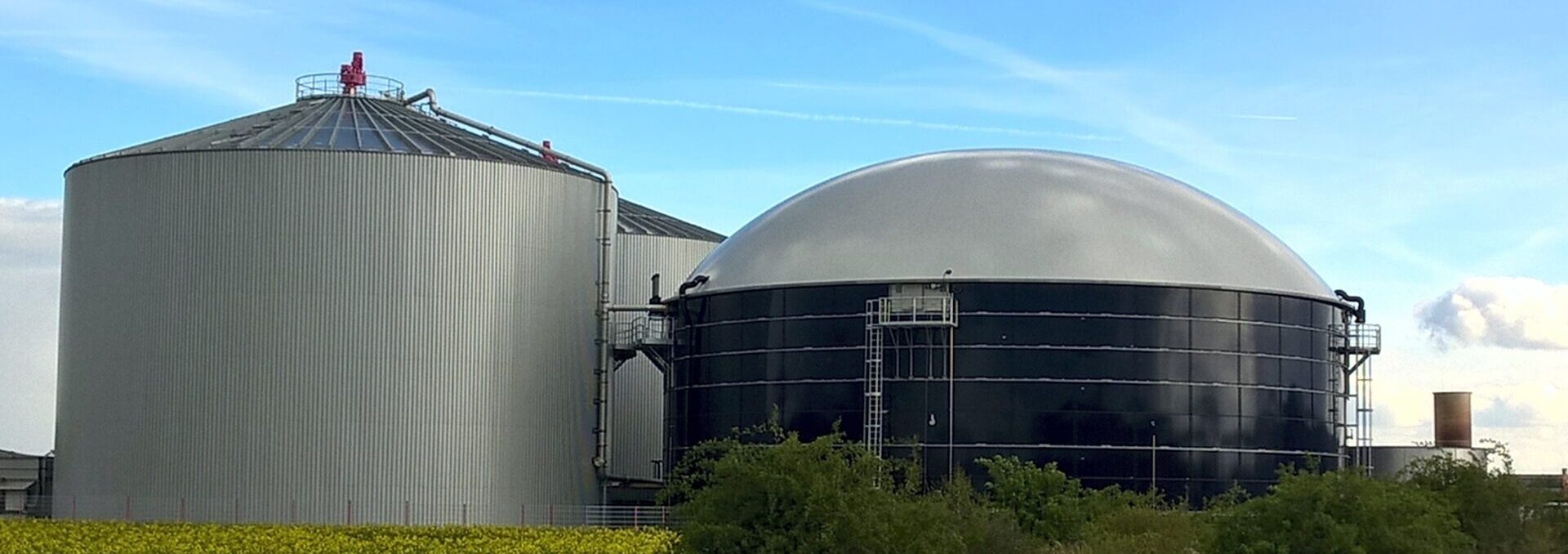CEDIGAZ is a leading authority providing in-depth research and market analysis on biomethane, biogas, renewable natural gas (RNG), and green gas, supporting the global transition towards sustainable energy solutions.
Why renewable gases matter
The terms biomethane, biogas, renewable natural gas (RNG), and green gas refer to sustainable energy solutions that transform organic waste into valuable resources. These gases play a crucial role in reducing greenhouse gas emissions and supporting the global energy transition. Understanding these concepts is essential to grasp their environmental and economic relevance, regardless of your background. In the following sections, we explore each term in detail with comprehensive explanations.

Global RNG Market Trends
The global biomethane (renewable natural gas, RNG) market continues its dynamic growth. In 2023, global production reached 9.25 billion cubic meters (bcm), a 20% increase from the previous year. This was followed by an estimated rise to 12 bcm in 2024, marking a 30% annual increase.
Evolution of global biomethane production (2010-2023)

Source: SCG Consulting/CEDIGAZ
This expansion is being driven by three converging trends:
- Energy security: Local production of biomethane has been prioritized by governments following global energy shocks, reducing reliance on imported fossil fuels.
- Climate policies: Biomethane is seen as a key lever to meet national and EU-wide decarbonization targets under REPowerEU and the U.S. Inflation Reduction Act.
- Methane emissions reduction: Mitigating fugitive methane from agriculture and waste streams is now a major international focus.
In Europe, biomethane production reached 5 bcm in 2023 (6 bcm are estimated for 2024) —driven by France, Denmark, Italy and the UK. Countries like Denmark already cover up to 40% of their gas demand with biomethane.
Main RNG producing countries in 2021.

In North America, the U.S. reinforced its leadership with 3.1 bcm in 2023 from 275 sites, rising to an estimated 4 bcm in 2024, thanks to the strong incentives of the IRA.
Brazil, India and China have smaller capacities today but are viewed as high-potential growth regions. Their national programs like Metano Zero (Brazil) and GOBAR-Dhan (India) are creating new demand signals.
The transportation sector stands out, accounting for 44% of global biomethane demand in 2023, driven by fleet operators and marine logistics.
Meanwhile, the first unsubsidized long-term biomethane contracts were signed in 2023, marking a turning point toward market maturity. Financial players and energy majors are accelerating investments in biomethane assets, infrastructure and technology platforms.
Looking ahead, biomethane production is expected to exceed 100 bcm globally by 2030, representing more than 34% CAGR over the decade. However, realizing this ambition will require faster permitting, streamlined cross-border trading, and clear political support.
Biogas: a raw energy source from nature
What is biogas?
Biogas is a gas produced through the anaerobic decomposition (in the absence of oxygen) of organic materials such as agricultural waste, food scraps, or sewage sludge. Its composition typically includes 50 to 70% methane (CH₄), 30 to 50% carbon dioxide (CO₂), and traces of other gases like hydrogen sulfide (H₂S). This variability depends on the feedstock and production conditions.
How is it produced?
The production of biogas relies on a natural process called anaerobic digestion. In specialized facilities known as digesters, microorganisms break down organic matter, releasing gas as a byproduct. Anaerobic digestion can be implemented at various scales, from small farm-based systems to large municipal treatment plants. Once recovered, biogas can be used directly in combined heat and power (CHP) systems or for local energy generation.
Why is biogas important?
Biogas offers a dual benefit: it valorizes waste that would otherwise be landfilled and reduces methane emissions, a greenhouse gas far more potent than CO₂. However, its raw composition limits its use to local applications unless it is purified into biomethane. In France, several thousand farm-based units produce biogas, contributing to circular economy principles and the country’s renewable targets.
Biomethane: a purified version of biogas
What is biomethane?
Biomethane is obtained by refining biogas to remove CO₂, water, and impurities, resulting in a gas containing over 95% methane. This purity makes it compatible with existing natural gas networks and various uses, such as heating or vehicle fuel. Unlike raw biogas, biomethane can be transported and distributed on a large scale.
The purification process
Transforming biogas into biomethane requires a step called “upgrading” or purification. Several technologies are used, such as membrane separation, chemical absorption, or water scrubbing. These processes isolate methane to produce a gas of quality equivalent to fossil natural gas. This flexibility makes biomethane a key player in decarbonizing gas networks.
Applications and benefits
Biomethane is highly valued for its role in the energy transition. In Europe, countries like Germany and France are investing heavily in its development, with ambitious targets to increase its share in the energy mix. Injected into networks or used as fuel (bioCNG), it reduces dependence on fossil fuels while valorizing local waste. For example, a project in Brittany produces biomethane from agricultural slurry, supplying thousands of households.
Renewable natural gas (RNG): biomethane in North America
What is RNG?
Renewable natural gas (RNG) is a term widely used in North America to refer to biomethane. It is a purified gas derived from the anaerobic digestion of organic matter, but the term emphasizes its integration into North American energy markets. RNG is often promoted as a direct alternative to conventional natural gas.
A regional specificity
Although RNG is technically identical to biomethane, its usage in language reflects a commercial and political strategy specific to the United States and Canada. Incentive programs, such as carbon credits under the Renewable Fuel Standard (RFS), encourage its adoption, particularly in the transportation sector. In the U.S., truck fleets run on RNG, reducing their carbon footprint.
Impact and potential
RNG is experiencing rapid growth due to its potential in existing infrastructures. For instance, companies like Clean Energy Fuels in the U.S. distribute RNG to fuel heavy-duty vehicles, while partnerships with agricultural producers increase its availability. RNG showcases how localized waste-based solutions can contribute meaningfully to global decarbonization goals.
Green gas: a broader vision of renewable energy
What is green gas?
Green gas is an umbrella term encompassing all gases produced from renewable sources, including biomethane, but also green hydrogen or synthetic methane. Unlike biogas or biomethane, which rely on organic matter, green gas can also be manufactured through technologies like “power-to-gas,” where renewable electricity (solar or wind) is used to produce hydrogen.
Diversified production
The production of green gas is not limited to anaerobic digestion. For example, water electrolysis generates green hydrogen, which can be combined with captured CO₂ to produce synthetic methane. This approach broadens the scope, making green gas adaptable to various energy and industrial contexts.
A role in the energy transition
Green gas is often seen as a future solution to decarbonize hard-to-electrify sectors, such as heavy industry or maritime transport. In Europe, initiatives like the Green Deal support its development, with pilot projects underway in countries like the Netherlands and Denmark. This overarching concept embodies an integrated vision of renewable energies, where biomethane is just one component among others.
Quick comparison of terms
To clarify the differences between these keywords, here is a summary table:
Environmental and economic benefits
- Greenhouse gas reduction: Mitigates methane emissions and promotes carbon neutrality.
- Waste valorization: Transforms waste into energy and valuable byproducts.
- Infrastructure compatibility: Seamlessly integrates with existing natural gas networks.
Global market outlook
According to Cedigaz, global biomethane production reached 7.7 billion cubic meters in 2022, a 20% increase from the previous year. Projections suggest production could exceed 100 bcm annually by 2030 as governments boost climate and energy security strategies.
Policy support and green gas initiatives
Governments across Europe and globally are backing biomethane development through incentives and supportive policies. For example, the UK has implemented the Green Gas Support Scheme (GGSS) to subsidize biomethane production, while also enforcing sustainability criteria to ensure carbon savings. These policies foster investor confidence and facilitate infrastructure development.
Industrial use cases
Major corporations are embracing biomethane as part of their decarbonization strategies. In 2025, AstraZeneca launched a biomethane plant in the UK converting organic waste into 100 GWh of renewable energy annually for its R&D and manufacturing sites. This is part of the company’s roadmap to achieve net-zero emissions by 2045.
Innovation and R&D
Technological advancements are driving down the cost of upgrading biogas to biomethane. Emerging techniques such as membrane separation, cryogenic upgrading, and biological methanation are increasing efficiency and scalability. Further R&D is focused on integrating biomethane production with carbon capture technologies.
Why choose CEDIGAZ?
CEDIGAZ equips industry professionals with precise data, forecasts, and expert analysis essential for strategic decisions in the renewable gas sector. Our subscription provides comprehensive reports and up-to-date insights, helping you stay ahead in the market. Discover our extensive range of publications covering global gas markets, biomethane development, and renewable gas innovations.
- Proven Track Record: Over 60 years of analytical expertise in natural gas and renewable gas markets.
- Trusted by Industry Leaders: Members from all over the world, including 47% energy companies and 27% consultants (2023).
- Comprehensive Databases: Extensive data on gas reserves, production, trade flows, infrastructure, and long-term contracts in 120+ countries.
- Exclusive Insights: Access to annual thematic studies, statistical reports, and weekly news updates.
- Dedicated Renewable Gas Services: Biomethane and hydrogen-focused resources, including the Global Biomethane Survey and Hydrogen Projects Database.
- Premium LNG Intelligence: Infrastructure mapping, monthly LNG flows and prices, and forward-looking market outlooks.


